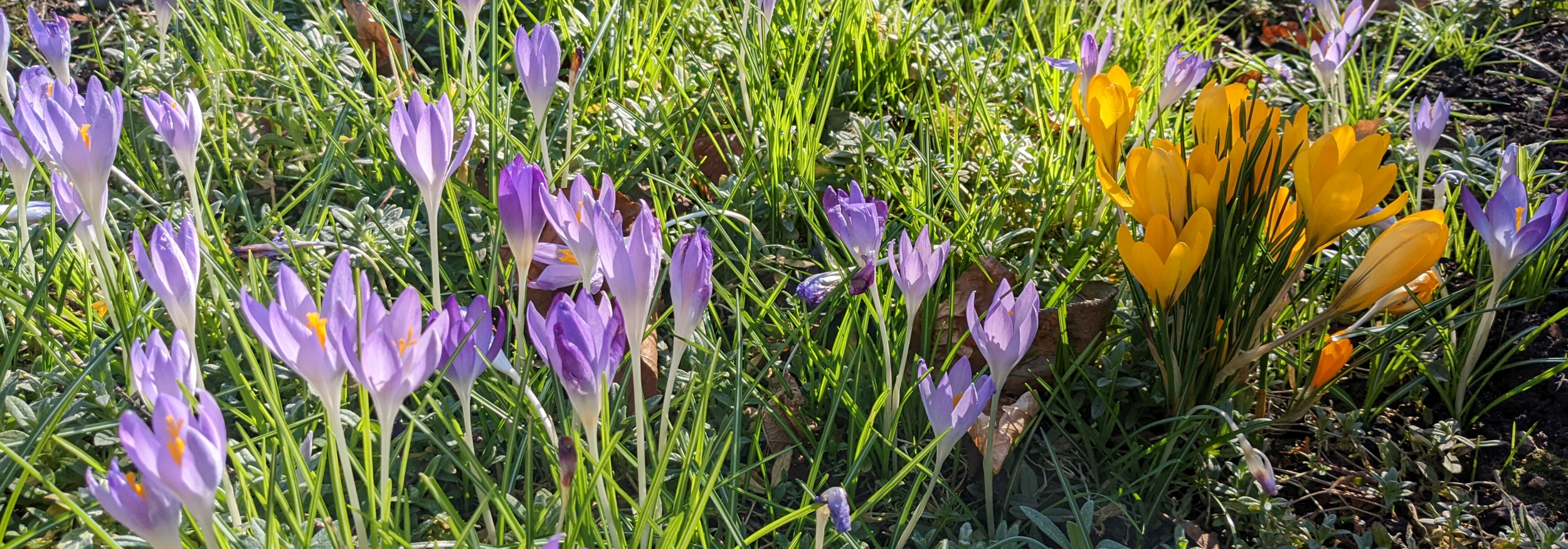Dig or No-Dig?
/As we leave the summer behind and start planning for next year, some of us might be considering what we can usefully do over the autumn and winter months. If you want to create a new border, renovate an old, or prepare the vegetable plot for next year, autumn is the time to do it. Hopefully we will have had a decent amout of rain by now, but the trick is to do these tasks before the ground gets too wet or cold so that the soil is easy to work and then has time to settle before spring. Traditionally, double digging was the way to go; excavate out around 50cm of soil, mix it with manure or compost and place the mix back into the ground. Back-breaking work, but with the benefits of fertile heathy soil. Or so it was once believed.
Studies over the last few decades show that digging may in fact be detrimental to soil structure and fertility. It destroys the tiny earthworm created air-filled channels and pockets which help to maintain structure and drainage as well as, conversely, water retention. Beneficial microbes are often killed when bought to the surface and exposed to sunlight. More is still being learnt about these, but they have been found to have many roles in keeping our soil healthy, including an important role in the decomposition of organic matter, in stabilising the soil, in recycling carbon, nitrogen and phosphorous, in increasing the available plant root area for nutrient uptake, and in degrading pesticides. In addition, digging often triggers weed germination and can act as a propagation tool for pernicious perennials such as bindweed as each small root cutting will grow into a new plant. I’m sure we have all experienced that…
So, what’s the answer? For the proponents of no-dig gardening, it is mulch, and they have been using it for years – that is a simplification I admit, but more below. The exact origins of no-dig gardening are unclear, but a number of books were published in the second half of the 20th century propounding the theory, giving plenty of advice on how to go about changing to no-dig and describing its benefits. Here in the UK, in the 1950s, two pioneers of the method were F. C. King, head gardener of Levens Hall (one of my favourite gardens) in the Lake District, who wrote a book called ‘Is Digging Necessary?’, and a Yorkshireman, A. Guest, who wrote ‘Gardening Without Digging’. In 1961, Ruth Stout in the USA followed on with her book ‘Gardening Without Work’ and Esther Deans in Australia wrote ‘No-Dig Gardening’ and ‘Leaves of Life’ in the 1970s. Since then it has moved from the eccentric into the mainstream, Charles Dowding is perhaps the most famous proponent of it here, with 7 books on the method to his name.
By leaving the soil alone and covering it with some form of organic matter, no dig gardening leaves all the hard work to the worms, microbes, insects, and fungi, to produce a friable, healthy, and fertile soil, which is easy to plant into and weed free. So, how to go about it? There is plenty of help out there, but to summarise: On an already cultivated bed, put a 15-20cm layer of mulch – well rotted manure, compost, wood chippings, rotted leaves – firm down and leave over winter, digging out perennial weeds as they poke up. These will gradually die down and become easier to remove as the worms and microbes do their thing below the mulch. Plants can be planted direct into the top layer. In subsequent years, only 5cm of cover is required. When creating a new bed, the weeds need to be killed first – no more digging out of turf and precious topsoil – so place a light-excluding material over the area, such as cardboard, and then mulch over it – grass clippings, leaves and straw all work well. Firm down and wait! It can take a year for some tough perennial weeds such as bramble and bindweed to die completely.
To save my aging back and knees, my plan is to try the method on my veg patch this year. I’ll report how it goes in a future blog – note that this method requires patience and time! If any readers already do the no-dig method, I’d love to hear from you.
Image: The Guardian blog, 2019


